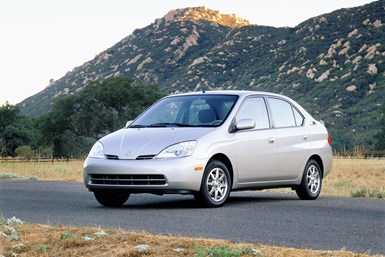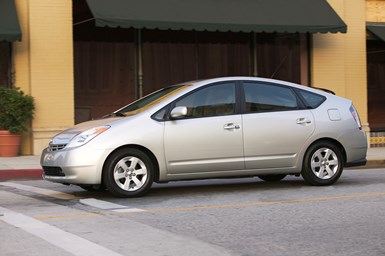Prius Turns 20
Who would have thought that the Prius would have such legs? Outside of people in Toyota City, perhaps not many. But in the U.S., 20 years on, and 1.9-million sold...
#hybrid
Toyota is celebrating the 20th anniversary of the Prius in the U.S.
Since the first-generation vehicle—the 2001 model year—was made available in the U.S., and through the years that saw variants (e.g., c v, Prime), there have been 1.9-million Priuses sold in the U.S.

Gen 1 Prius: Hard to imagine that this was once “revolutionary.” (Images: Toyota)
In terms of the history, there was gen 2 in 2004, gen 3 in 2009 and gen 4, the current one, which was launched in 2015.

Gen 2 Prius: The shape that came to mean “hybrid.”
The second-generation model is the one that has the exterior design which is quintessential Prius. Gen 3 pretty much refined the form. Gen 4 was a departure—and one that is still somewhat controversial.

Model year 2021 Prius 2020 Edition. Yes, 2,020 will be built.
Over the years we’ve written a lot about the Prius, both specifically and as a foil for other vehicles—just as everyone who is in the electric vehicle space today is trying to create a “Tesla beater,” for a long time it was about creating a “Prius fighter.”
And 20 years on, Prius is still the dominant hybrid.
Here are some of the things we wrote:
- Prius Hybrid Family Grows (2011)
- Prius: Still Moving Up (2012)
- 2013 Toyota Prius v (2012)
- Developing and Pricing the Prius (2013)
- 2016 Prius: The Fourth Generation (2016)
- Prime Number: 25 (2016)
- 2017 Toyota Prius Prime Premium (2017)
RELATED CONTENT
-
The U.S. Military Finds New Roads: Fuel Cell Powered Pickups
While it seems that fuel efficiency as related to the U.S. federal government is all about light duty vehicles, that’s far from being the case.
-
Rivian Gets Even More Money, Now From Ford
The electrification of automotive is serious business. This week it was announced that Ford is making a $500-million equity investment in Rivian.
-
Can You Drive an EV in the Rain?
Although there is a veritable fleet of electric vehicles coming on the global market within the next few years, it seems that if the results of research in the United Kingdom track in any way with the rest of the world then the OEMs are in for a whole lot of electric vehicles sitting unsold in dealer lots.


.jpg;width=70;height=70;mode=crop)